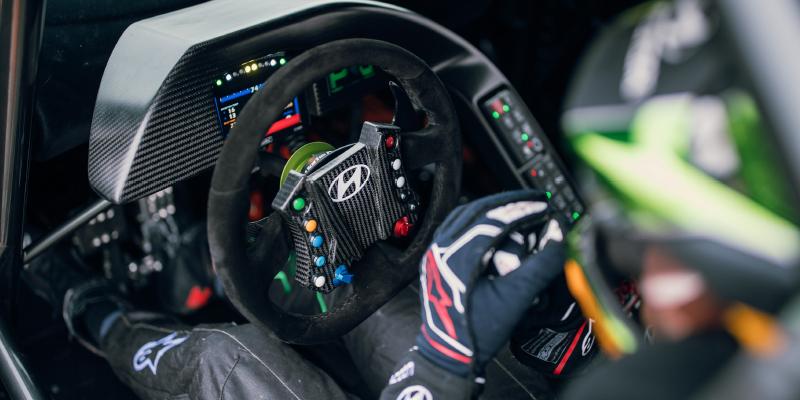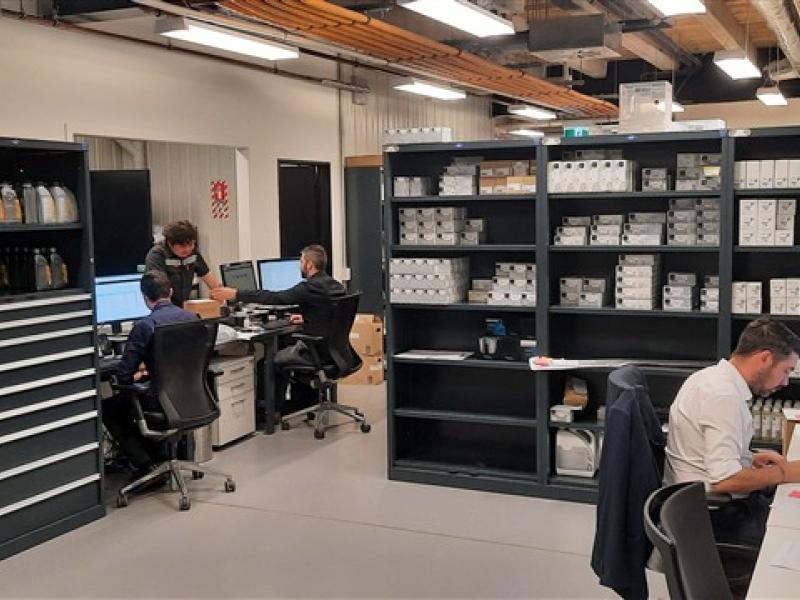He won the 2021 New Zealand Rally Championship with a round to spare, which is probably just as well: the Covid-19 Delta lockdown promptly forced the cancellation of the final round, the Rally of Coromandel.
A Whakatane-based replacement has since been found, incorporating stages that were classics of the 1980s Rally of New Zealand.
But in the meantime, New Zealand’s most accomplished rally driver is busy taking his Hyundai Kona electric vehicle rally car to new levels. Together with his small and specialised team, he is planning to be able give the car its rally debut in 2022.
Hayden Paddon may be the only driver in the world with experience in a World Rally Car, an FIA R5 rally car, the Asia-Pacific AP4 spec and EV rally technology. His locally developed Hyundai Kona EV is now at a point where – with suitable batteries on board – it can complete up to 45 km at competitive speed.
“That’s working with current battery technology and electronic management systems. So our next step will be exciting, and as new battery technology comes onto the market the viability of EV rallying will become clear.”
In terms of range, Paddon says both battery change-out systems and fast charging are being explored. Rallying currently does not allow competitive stages of 45 km length, though cars must tour out to service and some stages are run back to back with short touring stages in between.
The development of the Kona has some serious industry-level backers: Hyundai NZ, Mercury Energy, YHI energy and Gen Less are all specifically supporting the EV project.
The team has a prototype battery array in the car but is awaiting industry-wide moves to more ‘energy-dense’ batteries.
“So it’s important that we have a leading energy company on board to work with us as things develop,” he said.
“With a larger battery due late this year, we’re aiming for 40-45km of stage range. Voltage drop is a factor, but we are trying to manage that the best we can to reduce the effect on performance.”
The car’s electric motors make peak power in rally trim of 400kW, while comparable internal-combustion-engined rally cars make around 200-250kW.
“So power and torque management will help on this front. We hope to compete on an official rally next year. Compared to R5/AP4 in a pure test situation, the EV is faster and not necessarily from the power side, more so in terms of handling.”
For now, development is focused on the dual motor 400 kW rally concept, but if running the car at hillclimbs the team can fit two extra motors, boosting its power to an equivalent 800kW.
The car is 100 kg heavier than an equivalent AP4 car, but has a handling advantage thanks to the low profile of the battery pack and electric motors. Paddon expects to be able to significantly reduce the car’s weight as battery technology advances.
Going in to the closing months of 2021, the build team is in data-collection mode, doing development testing.
“This has been an exciting challenge for our team so far because every time we drive the Kona and gather data, we learn so much about how to take the project forward. We are tuning both the software and the chassis to extract as much performance as we can,” he says.
Some of the systems echo developments in Formula One, including powerful regenerative braking that pushes charge back into the car’s batteries. Conventional braking is by a full World Rally Championship disc brake system with four piston calipers at each corner, while the regenerative ‘engine braking’ effect switches in seamlessly when brakes are applied. Electronic drivetrain management will ensure mechanical and regenerative braking is used to harvest energy back into the drivetrain.
Paddon says the FIA’s new WRC hybrid rules for 2022 are a small step in the right direction, but are unlikely to bring new manufacturers to the championship without further support.
He says development of hydrogen fuel cell energy systems will be influential on hybrid and EV uptake for motorsport.
Paddon is both team leader and – of course – development driver. He has the unique advantage of having driven WRC cars, AP4 and AP4+ cars and now the EV.
Back to the top in 2022
Hayden Paddon’s own hillclimb event, the Ben Nevis Golden 1200, now has a firm date for 2022.
The event, which is the only one allowed to use the Ben Nevis Station course, will take place over the weekend of 5-6 February. It attracts the fastest drivers from rallying and offroad racing and is open to vehicles from many dirt-specific disciplines.
Paddon’s Semog race buggies are eligible, though he is likely to run his AP4 Hyundai i20 rally car.
Set 1200 metres above sea level, the 3.6 km course has 22 corners and is the highest public road in New Zealand. It is described as ‘half fast, half twisty’. The event is just 25 km from the town of Cromwell.
Paddon staged the inaugural hillclimb in 2020, but missed a date this year due to ongoing uncertainties over Covid lockdowns.






